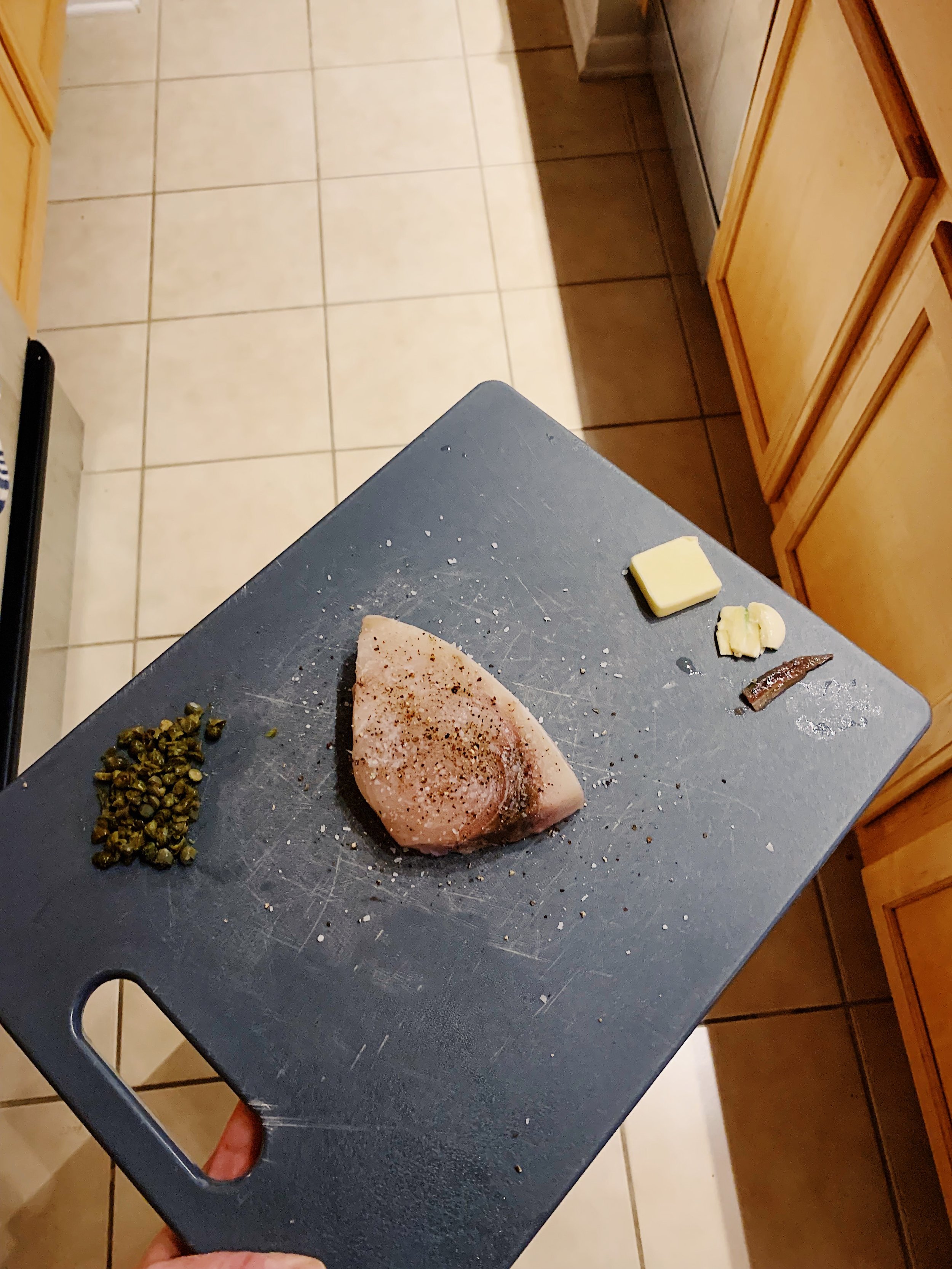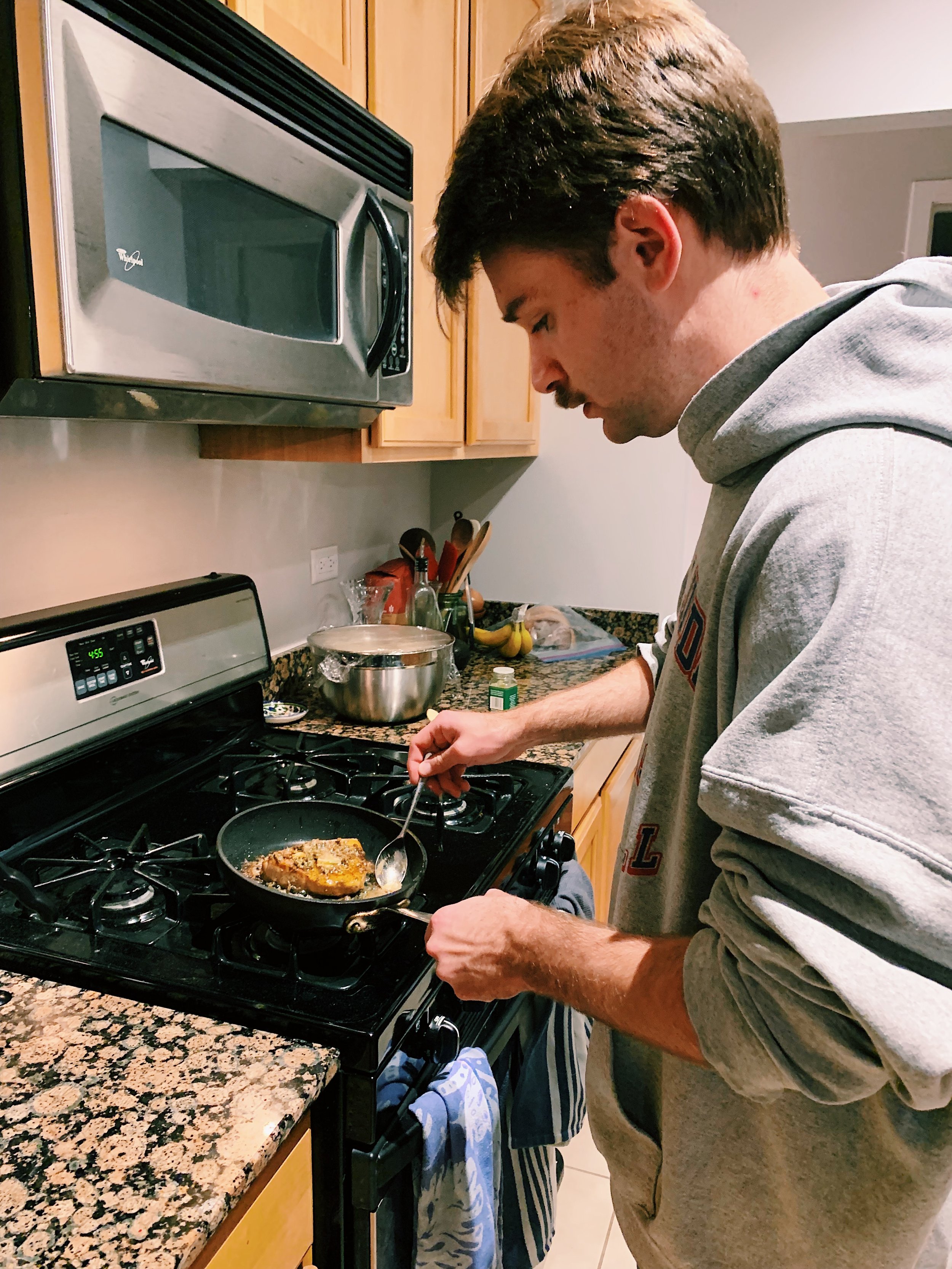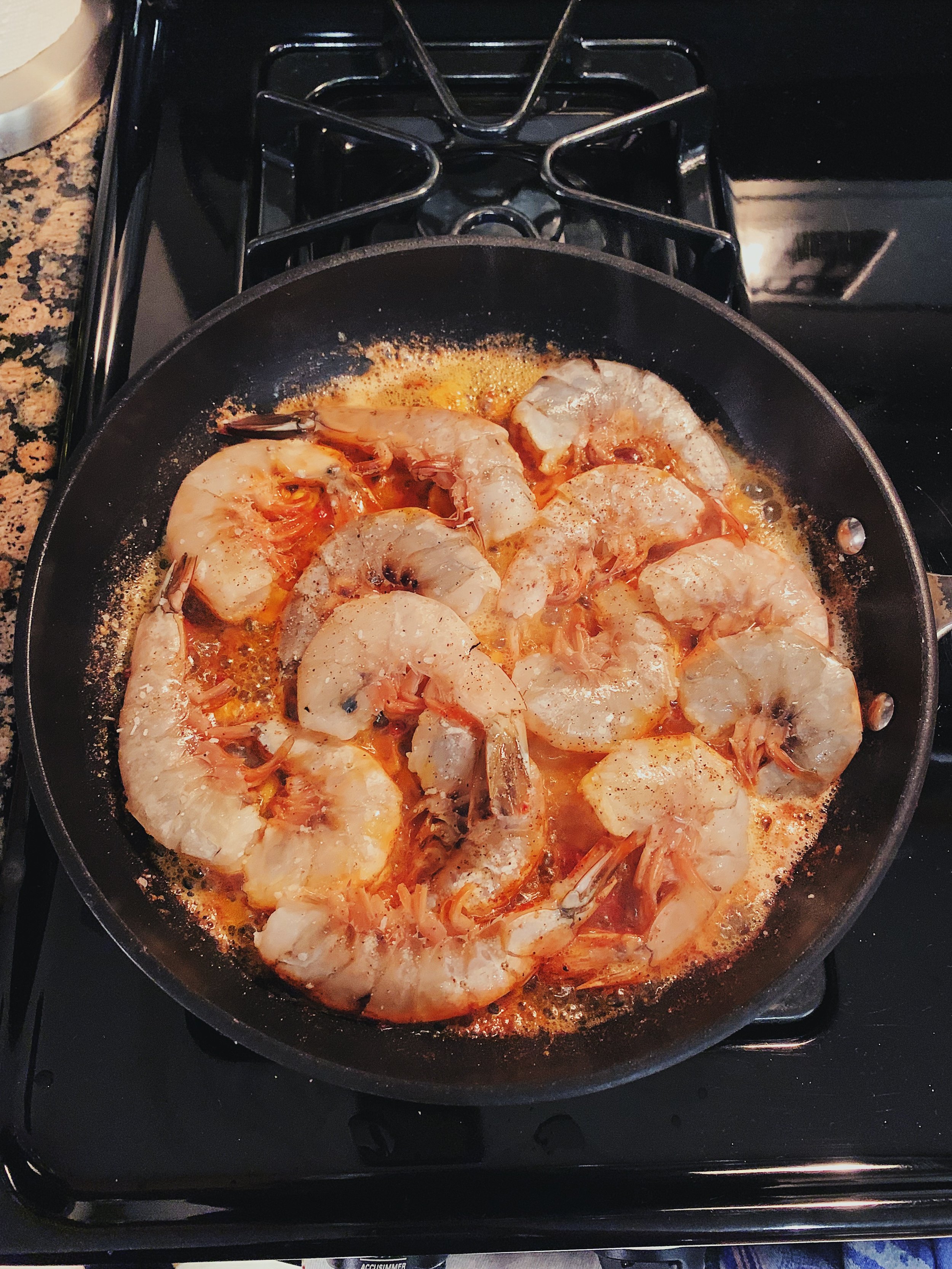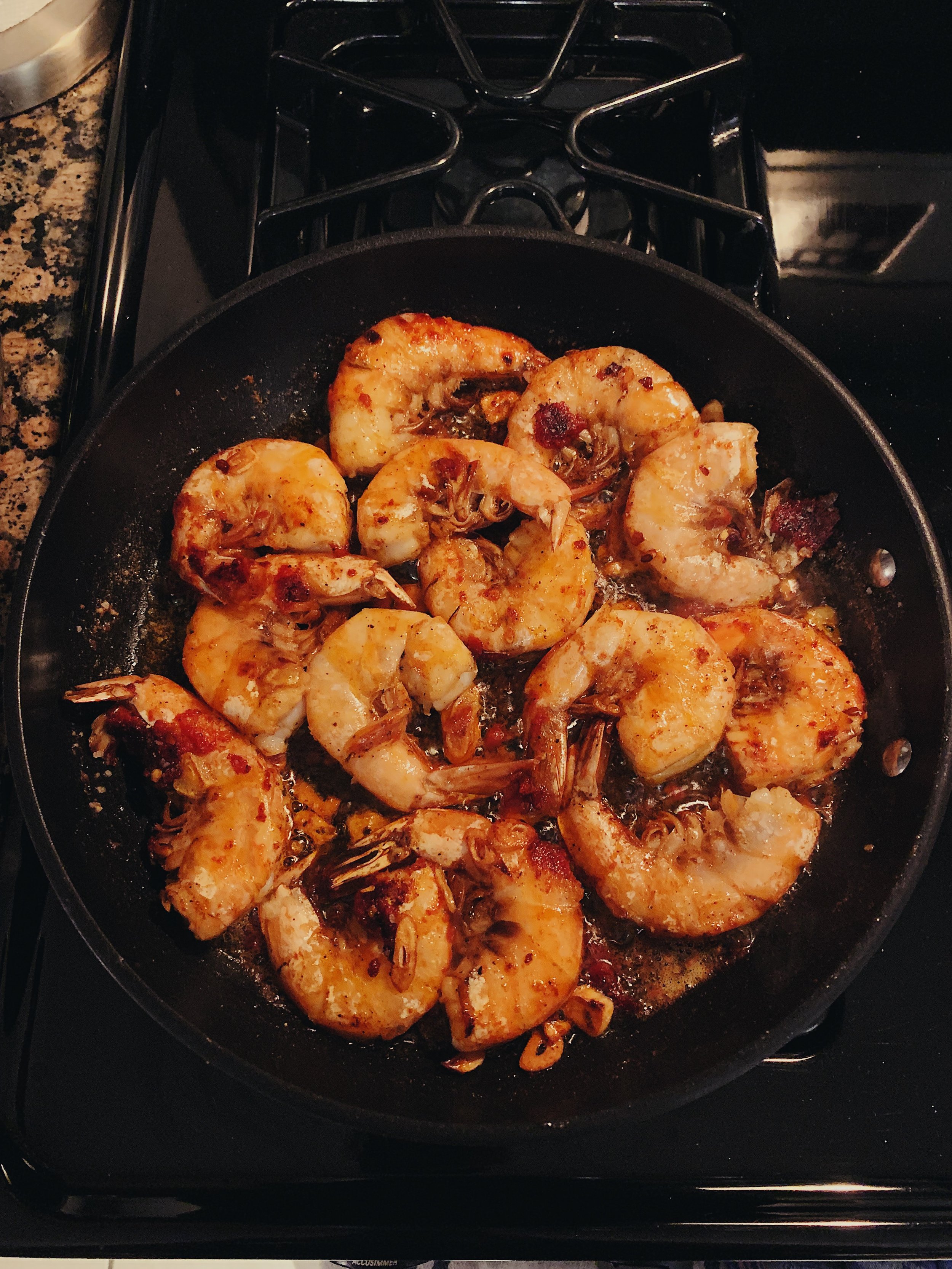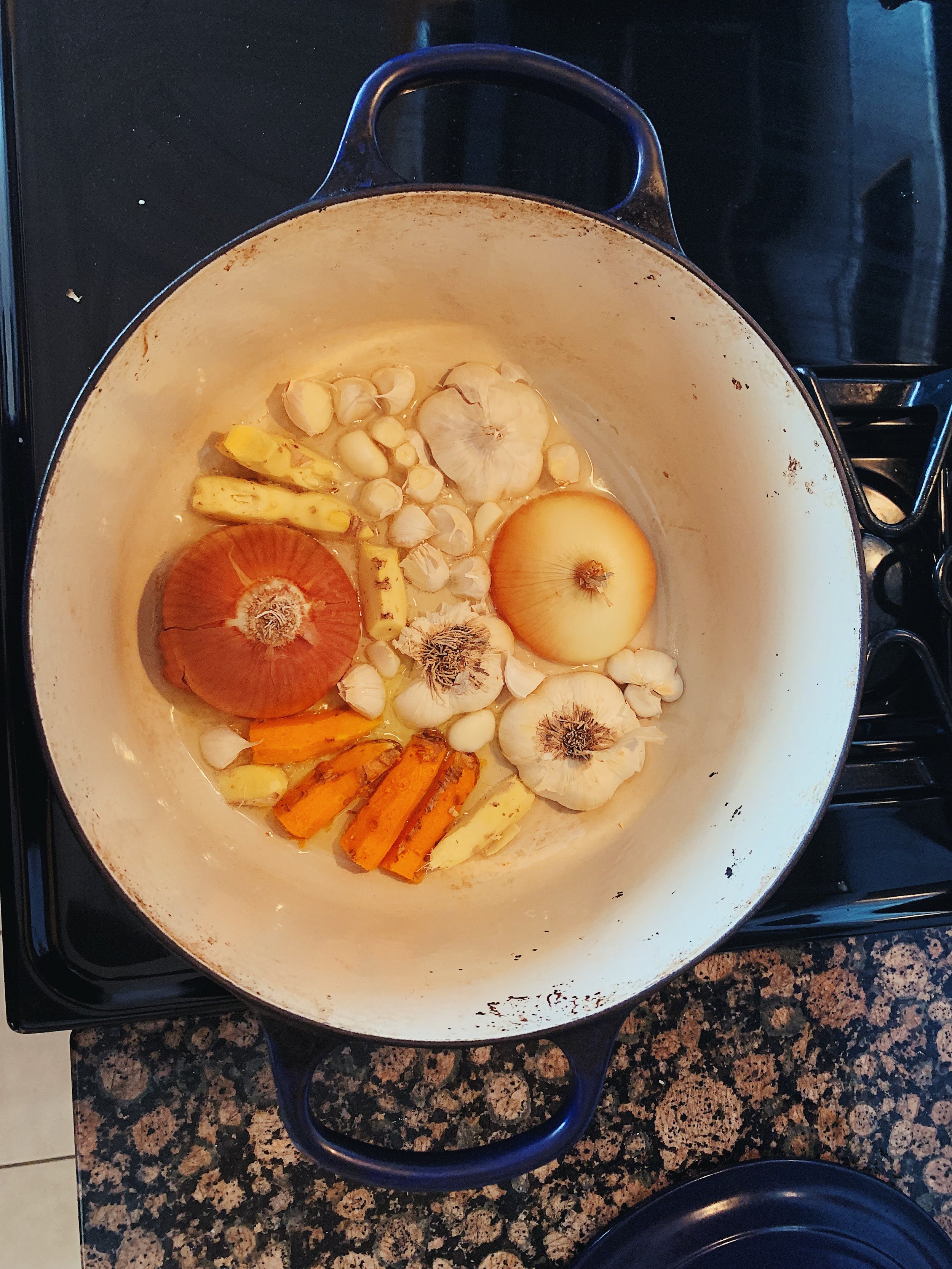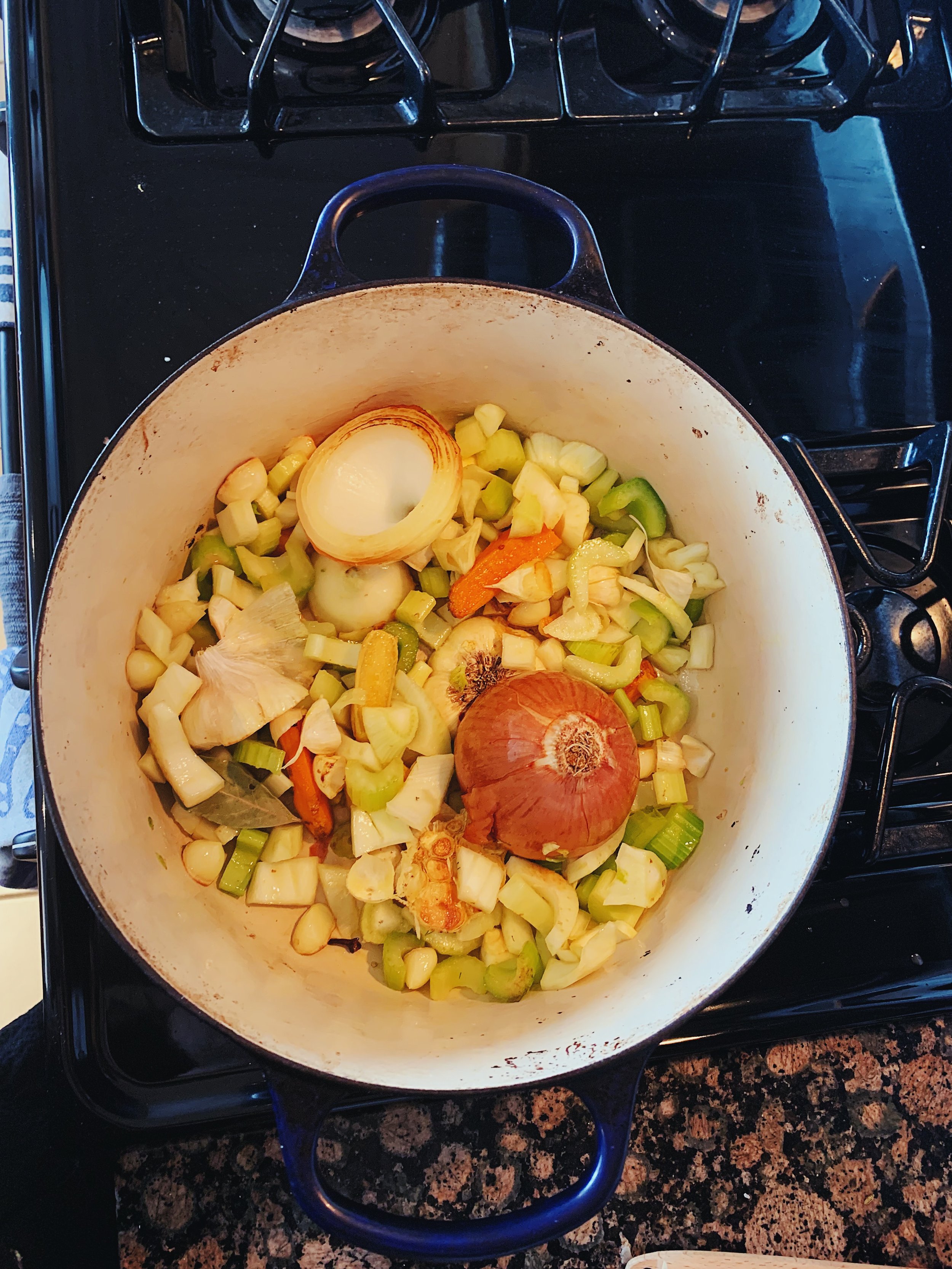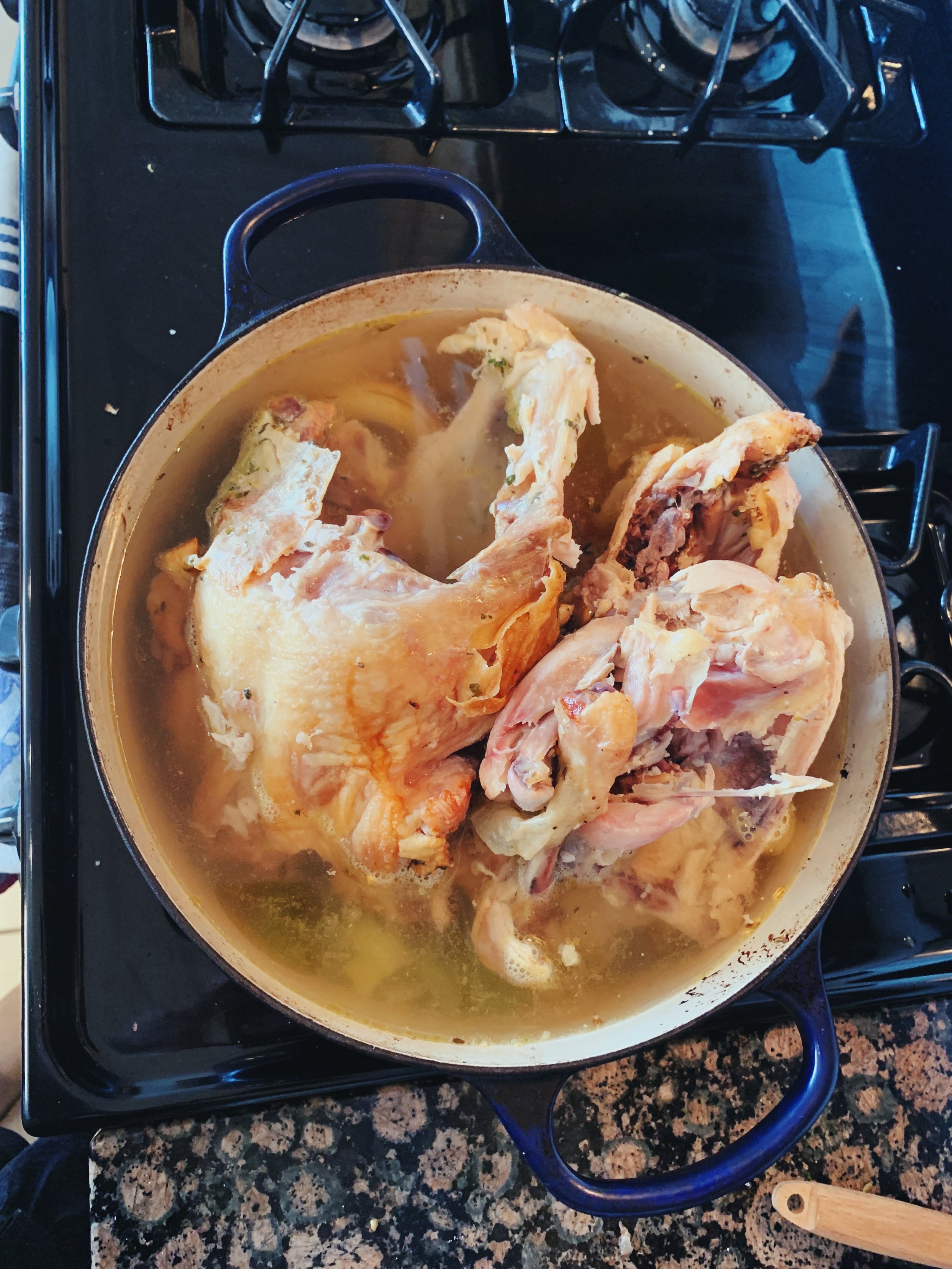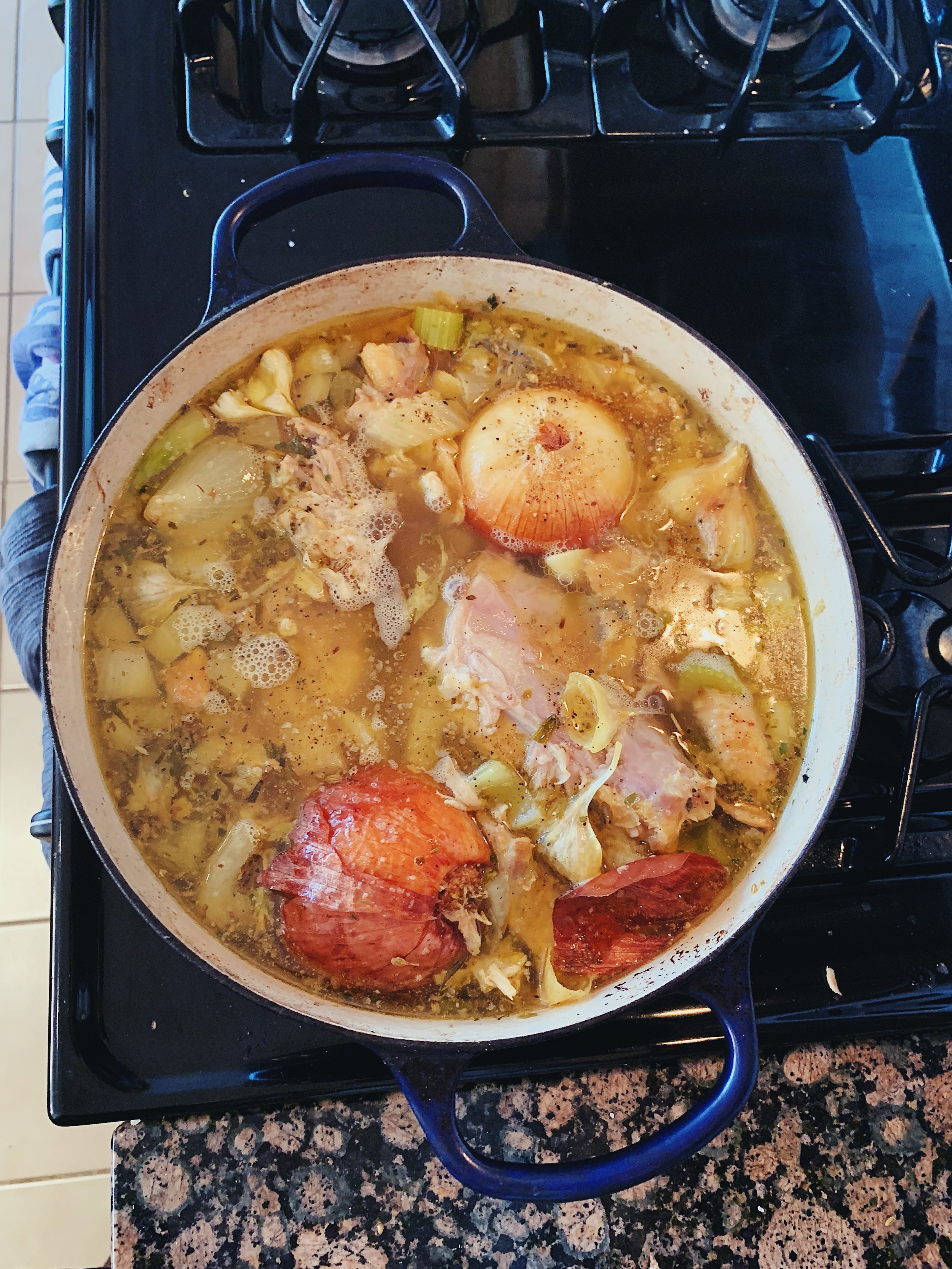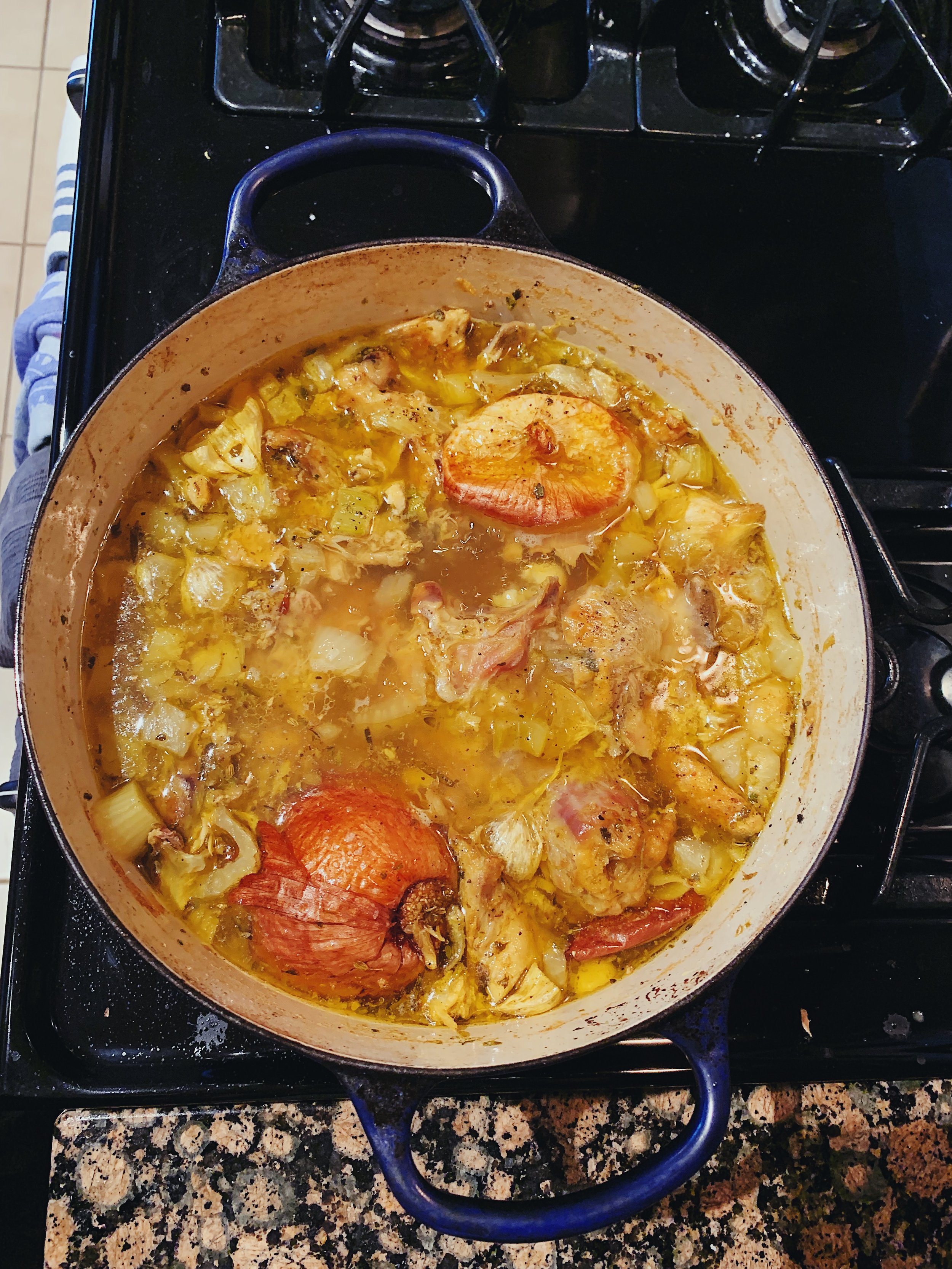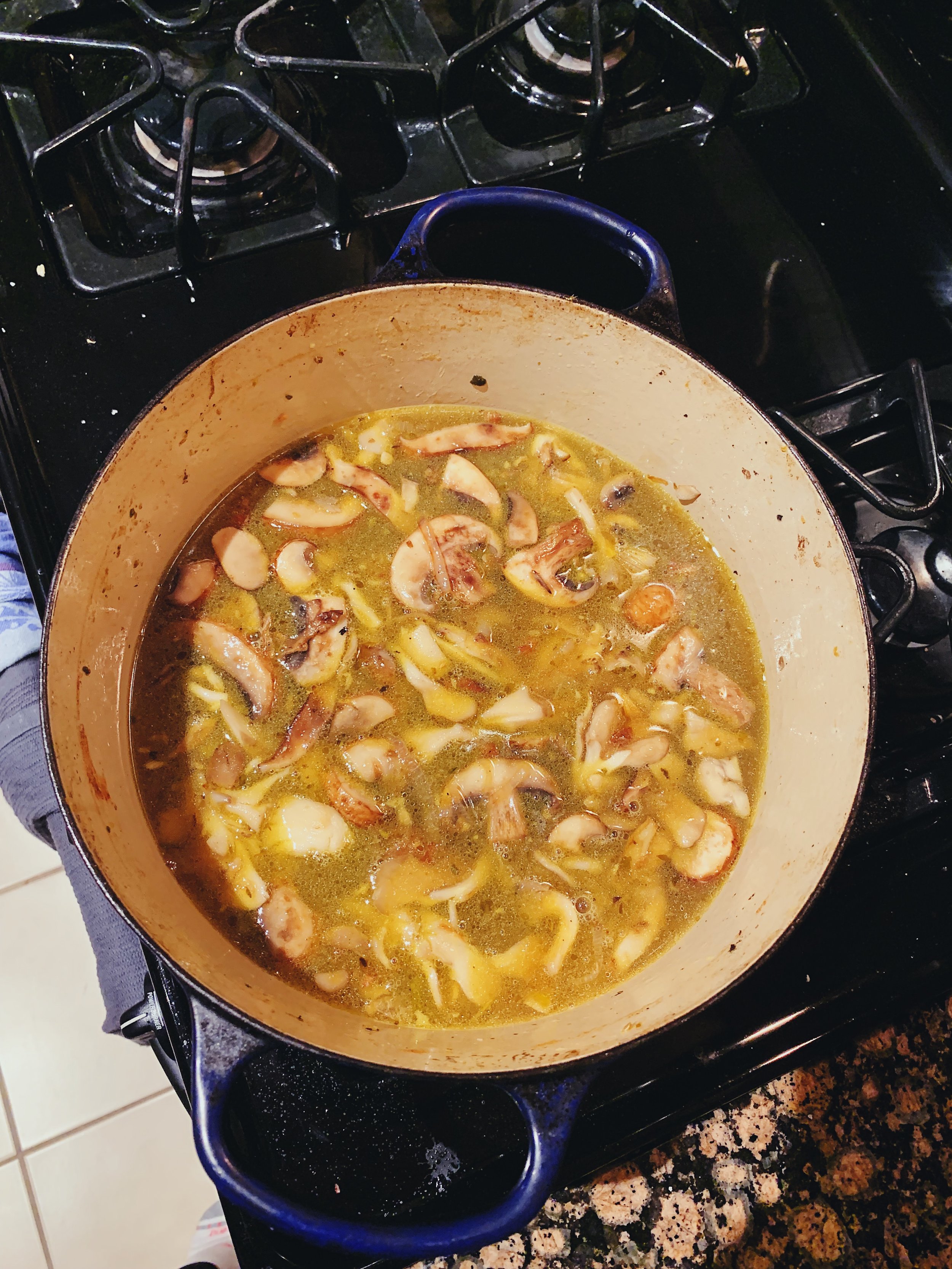I made this dish — well, actually my brother mostly made this dish — using a .4 lb. swordfish steak, which we split between 6 people. I’m at the point where I’ve eaten more seafood in one year than I have in my entire lifetime, so I was not about to buy 16 oz. of swordfish.
Swordfish itself is rather dense, on the drier side, and dons a distinctly fishy taste. It’s not a personal favorite. Neither is it a favorite of my family members, who generally stay away from anything fishy and stick to the occasional salmon filet once or twice a year. (We’re from coastal Orange County and we still don’t have a pallet for seafood!) But somehow, each family member enjoyed their bite of this fish. I think, because it was dominated by salty, buttery, and briny flavors. The fishiness hit last.
The assembly is rather simple. Season the swordfish with salt and pepper, and sear it in a skillet until golden brown on each side. Then add butter, a smashed garlic clove, an anchovy, and chopped capers. Let the butter melt, then use it to baste the fish, scooping it up and over the steak for several minutes. The whole process takes about 12 minutes.
The fish was like a salty umami bomb. I’d recommend forgoing the anchovy in this case. It seemed to be what put the fish over the edge in the salt category. Everyone enjoyed their one bite, remarking that that was all they needed to enjoy the fish.
215 recipes cooked, 10 to go.


